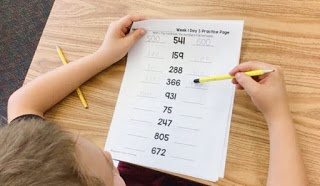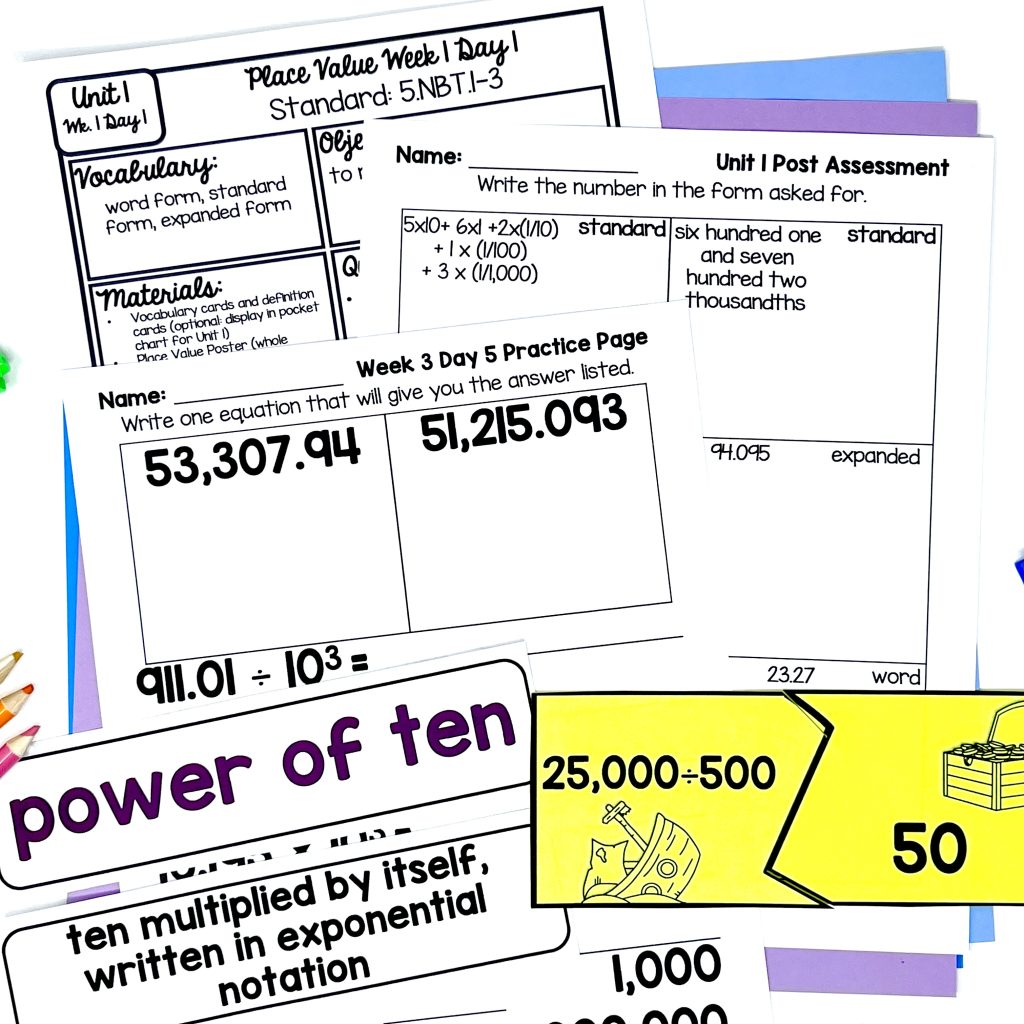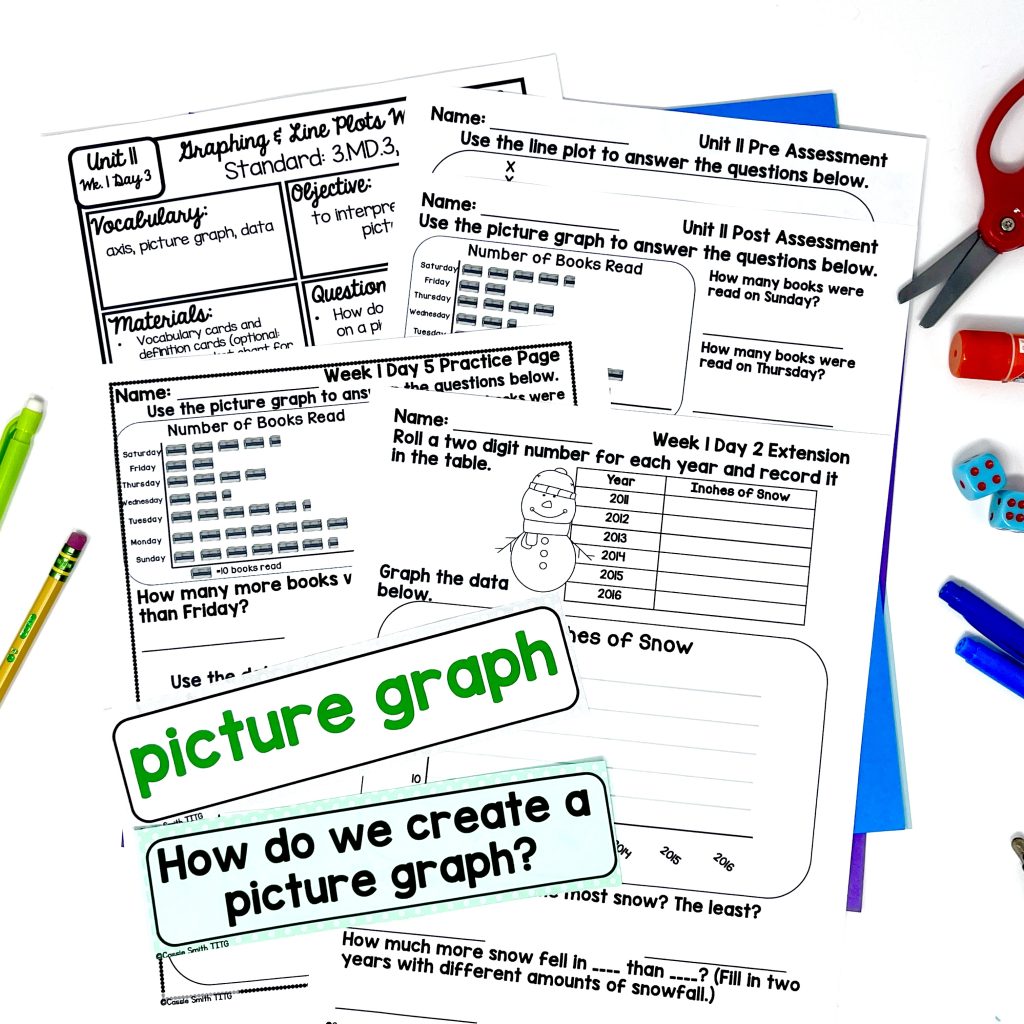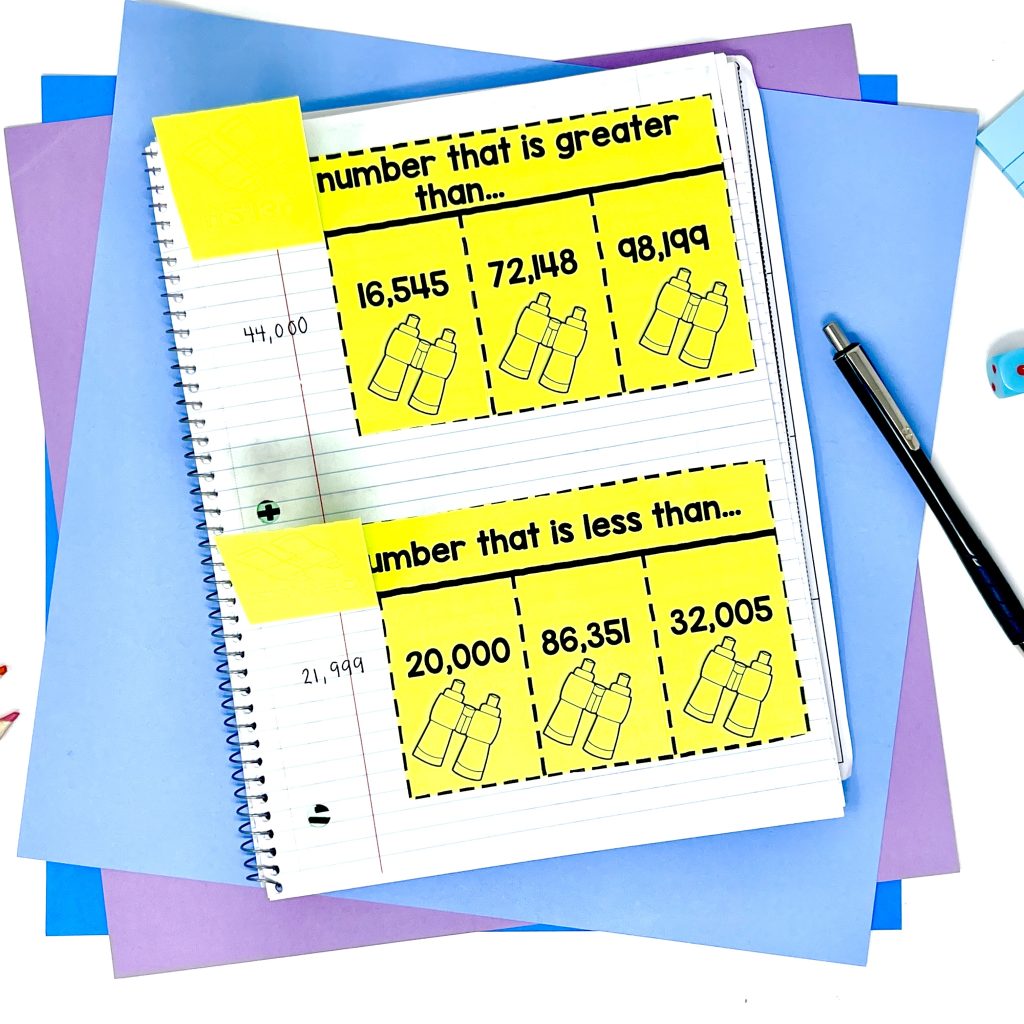I’m going to share with you how I’ve had success with my guided math set up. This method has worked for me when teaching small math groups in both lower and upper grades. I’ll confess…I don’t do Guided Math the traditional way.
When I first started out, I was constantly planning what my students would be doing during each rotation.
✔️I was prepping materials.
✔️Differentiating.
✔️Prepping more.
✔️✔️✔️Prepping. Prepping. Prepping.
And even after I did all of that, Guided Math never ran smoothly.
After all of that prepping, I was still dealing with off-task students, interruptions to the teacher table, or too many students in one place.
I decided I was finished with this method.
Then, I made one basic change to my small math groups. And it changed everything!

I’m Going to Help You With Guided Math Too! It’s Going to Be Painless, I Promise
First of all, know and believe that Guided Math can work in your classroom. Don’t feel intimidated or overwhelmed.
Your math groups can be streamlined, but still flexible. You can even do this without another adult helping in your classroom.
Yes–you can do this, even if you have that class.
The Ground-Breaking, Earth-Shattering, Stupid-Simple Change I Made to Guided Math That Changed EVERYTHING
I stopped rotating.
No.More.Rotations.
You know those cutesy charts where group A goes here, there, and then there? Group B starts here. Group C starts there. Group D works over there. Then, we all rotate.
Yea, I stopped that.
Instead, I developed a system I call Flexible Guided Math. All of my students work at their seats independently (or any empty desk in the classroom, really. The point is to be spread out.)
Then, I pull math groups to my table.
☑️ That’s it. It’s that simple.
I call students over to my table. I don’t ring a bell and make everyone rotate. I don’t have set times. I can work with a group for as long of a time or short of a time as I’d like!
I don’t even have set groups. I can pull whoever I want!
And it’s powerful you guys. I transfer the responsibility of learning to the students.
Instead of them sitting at a “station” working on whatever task I put there, they are choosing what to work on.
⚠️Of course, there are guidelines. (I’ll explain that more in a second.)
But the point is, the students are given the power of choice. I’ve seen nothing but good results from this. My admin even commented to me once as he looked around the room, “This could keep running even if you stepped out of the room. Your students all know what they are supposed to be working on.”
The One Essential Ingredient to a Successful Flexible Guided Math Set Up
It’s just one thing.
A Must Do/May Do chart.
Now, these come in a variety of forms, but the must do may do chart is my favorite because of its simplicity.
But, I have seen other teachers have success with choice/menu boards as well. It’s really a personal preference. I’m a minimalist by nature, so I try to keep things as simple as possible.

This is a generic example of a Must Do/May Do anchor chart. You can even make individual ones for specific students if you need to. It’s a great way to differentiate your instruction and expectations.
You can be as detailed on your chart as you want. You can put specific centers or activities, certain technology you want your students to use, anything you want!
The Painless Way I Plan for My Small Groups
Planning for this style of Guided Math is very simple.
If you use my Guided Math units for Grades 1-5, you’ll notice that there is a lesson plan, a practice page, and a center activity for each day.
✔️✔️✔️So there you have your lesson for the teacher table (or even whole group math if you prefer), your practice page for a must do activity, and a center activity.
The Real Secret To The Teacher Table
Remember–since my math groups are FLEXIBLE groups, I can pull students in and out of them all the time.
I use the information I gather from my students’ independent work in whole group math to set up my groups. This could be something as simple as an exit ticket problem on a sticky note.
If you use my Guided Math units, you can use the problem of the day as your ticket out-the-door!

Do I adjust these groups every day?
No, not usually. But I do refine them from unit to unit.
Students who do well with geometry may struggle with addition and subtraction, therefore they may need to be in a different grouping.
During teacher time I target students to help grow them in a certain skill.
The secret to the teacher table is the order I pull my math groups.
I usually start with my middle group…you know, the students who are inconsistent with the objective.
They kind of get it–but aren’t 100% sure how or why they are solving a problem a certain way. Normally I have found that this group of students needs a little extra practice and direction from me before they are ready to try their independent work on their own again.
The next group I pull is my high flyers. This is usually very brief since they have already shown mastery of a skill.
I use this quick check-in time to make sure that they really DO get it and are comfortable with the objective. By the time I pull them, they have usually finished their independent work and we can look over it. I can look for any gaps in their learning and then challenge them further.
All of my plans from my Guided Math units have remediation and enrichment suggestions for each lesson. This allows me to quickly see how I can enrich learning for my highest group of learners.
The last group I pull is my group of students who are really struggling with the objective.
I pull them last because I need to spend the most time supporting them!
Also, by this time, if a student from my first group is still having a hard time with something, they have probably come back to me for support. Now, I can add them to my last group and give them another dose of targeted instruction!

What I Use For Math Small Group Activities
Now, I already told you that my students’ activities are determined by a must/do may do chart. So what’s on the chart? What are their responsibilities? What are their choice activities?
Must Do: Independent Practice
Well, first and foremost–independent work is a must do. Either today’s practice page from my Guided Math units, or another form of independent work. (Think ticket-out-the-door, problem of the day…some type of independent work.)
Must Do: Daily Fluency Practice

There are so many different ways students can practice fluency independently during Guided Math time.
If you have devices, students can do their facts daily on xtramath.org and also use these magic reveal games to practice their math facts.
You can even give students simple self-checking flash cards.
One of my favorite ways to have students practice their facts is simple fluency pages. I print the pages from math-drills.com and put them in sheet protectors. I print the answer sheet on the back so students can check their own work.
May Do: Center Activities
These are center activities from my Guided Math units and there is one for each day!
They line up perfectly with the lesson taught that day and the practice page your students do for independent work.

The Guided Math Units include a variety of activities to keep your students engaged. There are sorts, dice games, spinner games, puzzles, board games, and much more.
By the way–these activities are another great way to spiral review throughout the entire year! You can keep out a variety of activities for students to choose from. Prep MANY early in the year and just rotate them.
May Do: Digital Math Practice
If you have access to devices for you students, they’ll love these interactive digital math lessons (Grades 1-5).
They include a few simple teaching slides to help students understand the lesson, then 10 practice problems. The slides are clear and simple so students will know exactly how to solve them without needing to ask you what to do! Great for independent work!
May Do: Math Website Games
Aside from xtramath (which is a part of practicing fluency and is a must do activity in my classroom), there are tons of fun math websites out there. These make for great may do activities if your students are able to get on their own devices.
However–use caution and make sure your students are really practicing math. Some websites, such as coolmath, offer a variety of math games but have other games that are just for fun and lack educational quality.
And The Best Part? What Does Doing Flexible Guided Math Mean For You?
This ultimately means WAY less prep for you every week!
Students will have so many options to choose from during the “May Do” part of Guided Math, that there is unlikely to be too much repetition.
Just rotate your centers every so often to keep things fresh (and to spiral review)!

Check Out Guided Math for Your Grade Level:
These bundles include everything you need to teach math in your classroom!
From editable lesson plans, to daily centers, practice pages, and assessments–you’ll have everything at your fingertips!















